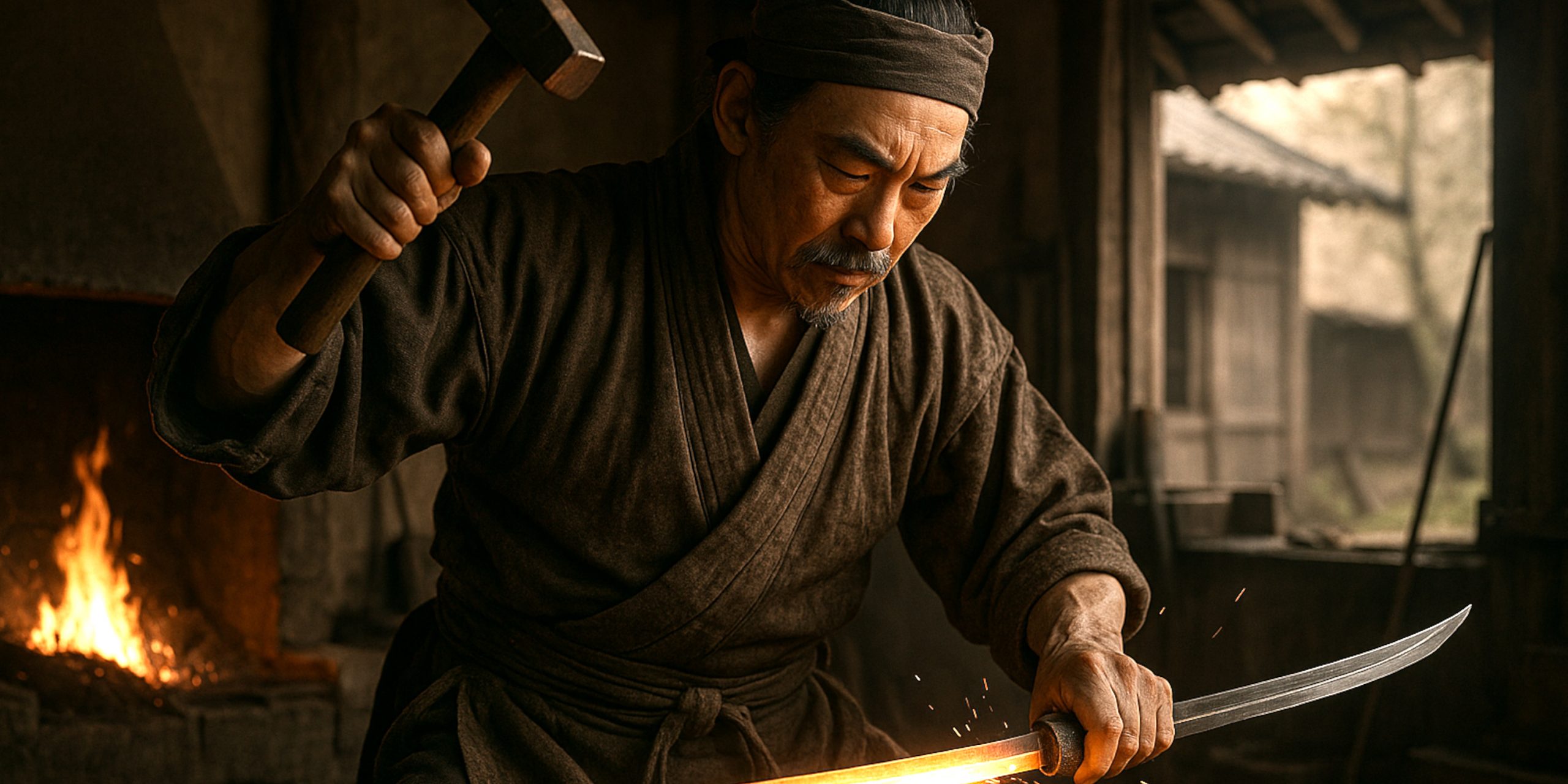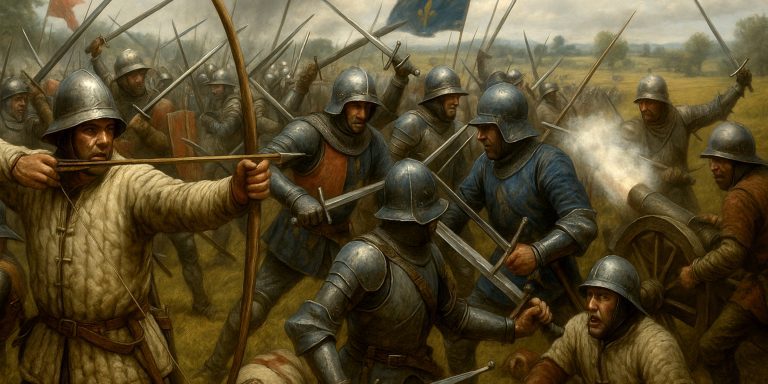
Muramasa is among the most infamous names in the history of Japanese swordsmithing. While not as universally celebrated as Masamune, his legacy is arguably more complex and shrouded in both historical reverence and superstition. The swords he forged became the subject of legends, political bans, and literary fiction. Separating fact from myth requires care, but what remains undisputed is the lasting influence Muramasa had on the craft of sword-making during Japan’s tumultuous Sengoku period.
Historical Background
Muramasa is believed to have been active during the late Muromachi period, likely in the early 16th century, though exact dates remain uncertain. He established a school of swordsmiths in Ise Province, in what is now Mie Prefecture. The blades produced by his forge were classified as sōshū-den, meaning they followed the Sōshū tradition associated with Kamakura swordsmiths, which emphasised robust construction and deep curvature suited to battlefield conditions.
The name ‘Muramasa’ likely refers to both the individual founder and the lineage of smiths who continued the tradition under his name for generations.
Sword Characteristics
Muramasa blades are distinctive and recognisable to collectors and historians alike. Their most common traits include:
- A pronounced hamon (temper line), often with a wavy or irregular midare pattern
- Thick kasane (blade thickness), giving the weapon notable heft
- Wide mihaba (blade width) tapering toward the point
- A short kissaki (tip), which allowed faster cutting action in close combat
- Prominent nioi and ashi formations within the temper line, demonstrating the skill of the quenching process
These features contributed to their deadly cutting power, which was highly prized by samurai during an era of nearly constant warfare.
Superstition and Banishment
Muramasa’s notoriety is due in large part to stories that developed during the Tokugawa shogunate. According to Edo-period accounts, Tokugawa Ieyasu considered Muramasa blades cursed. His father Matsudaira Hirotada and grandfather Matsudaira Kiyoyasu were reportedly both wounded or killed by such blades. Ieyasu’s son Nobuyasu was forced to commit seppuku with a Muramasa blade, further fuelling the association with tragedy.
Whether these accounts are accurate or products of political propaganda remains debated. What is clear is that Muramasa swords were eventually banned from use by Tokugawa retainers, although many still secretly kept or used them. The stigma, paradoxically, only added to their allure.
The ‘Cursed Blade’ Myth
Later literature, kabuki plays, and folklore portrayed Muramasa swords as bloodthirsty or possessing wills of their own. These tales suggested the blades would drive their wielders into fits of violence or compel them to kill, even against their own intentions. The image of the Muramasa blade as a ‘demon sword’ contrasted sharply with the spiritual, almost serene character attributed to Masamune’s work.
Such myths are not grounded in metallurgical reality but reflect cultural anxieties of the time. Still, they shaped how Muramasa was remembered and contributed to his enduring reputation.
Surviving Blades and Collecting
Despite the ban, many Muramasa swords survived. Today, they are prized by collectors for their craftsmanship and historical weight. A genuine Muramasa is identifiable through:
- Tang inscriptions (nakago-mei) with distinctive kanji for Muramasa (村正), often with slight variations across generations
- Blade structure consistent with the Sōshū tradition
- Comparison with known signed works and extant pieces held in museum collections
These swords appear in various forms, including katana, wakizashi, and tantō. Prices vary dramatically based on condition, provenance, and authenticity, but genuine examples have been known to reach into the tens or hundreds of thousands of pounds at auction.
Legacy
Muramasa’s legacy sits at the intersection of history and legend. His swords were not only tools of war but also symbols of danger, rebellion, and fatal destiny. The myths built around his work turned a skilled swordsmith into a figure of cultural folklore.
Yet beneath the drama lies a master craftsman whose work reflected the needs of his age, an era of fractured loyalties, battlefield innovation, and political upheaval. Whether revered or reviled, Muramasa’s name continues to resonate through centuries of Japanese history.
Where to See Muramasa Blades
Several Muramasa-forged swords are preserved in museum collections across Japan. Notable institutions include:
- Tokugawa Art Museum (Nagoya)
- The Japanese Sword Museum (Tokyo)
- Ise Shrine’s collection, which houses regionally significant blades
These locations occasionally display Muramasa swords on rotation, often alongside works by rival schools and smiths.
The Seven Swords Takeaway
Muramasa remains one of the most compelling figures in Japanese sword-making. His blades reflect the violence and precision of a time when the sword was both an instrument of survival and a bearer of meaning far beyond the battlefield. The stories surrounding his work have blurred the line between artistry and superstition, but the steel itself tells a simpler story, of a master whose edge has never quite dulled.
Watch the documentary:



